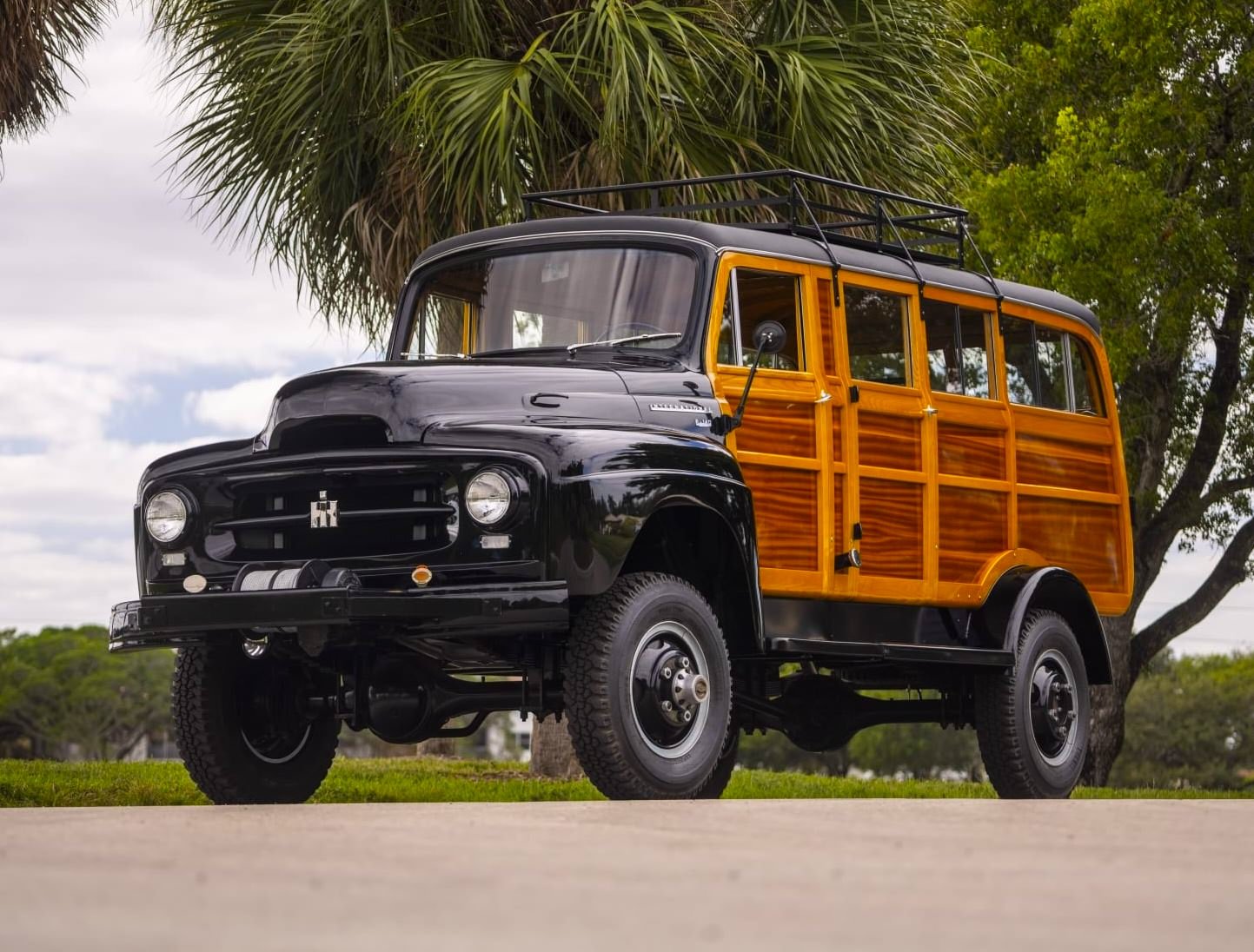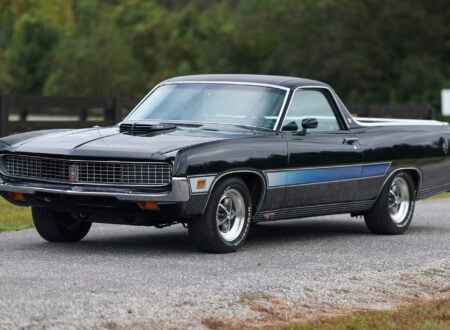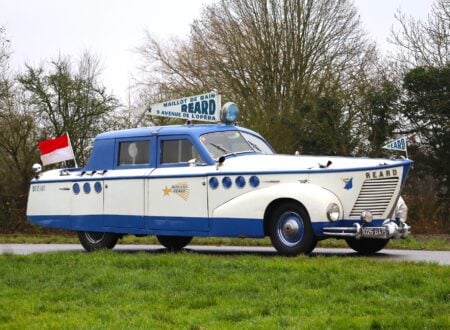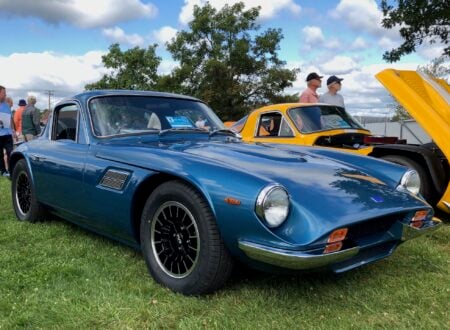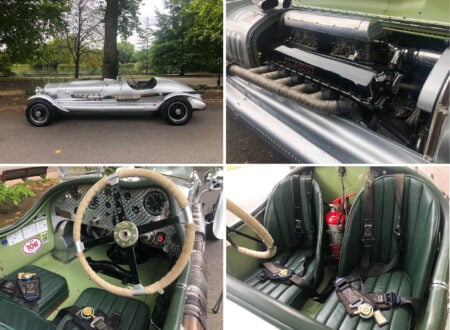This is a 4×4 1954 International Harvester R140 that was specially ordered by the Army Corps of Engineers for the Chief Engineers of the Minuteman Missile System in South Dakota. Just five were made, and three are known to survive.
The 4×4 version of the R140 was ideally suited to carrying engineering crews out to remote sites during the development and construction phase of the Minuteman ICBM systems from the 1950s through into the 1960s.
Fast Facts – The International Harvester R140 4×4
- The 1954 International Harvester R140 4×4 was custom-built for the Army Corps of Engineers to support the Minuteman Missile System in South Dakota. Only five were made, and this restored example is one of three known survivors, featuring a rare bus-style wooden body and excellent off-road ability.
- The R140 debuted in 1953 as part of International Harvester’s R-series, offering medium-duty trucks with 4×4 capability for the first time. Powered by a 108 bhp OHV SD-240 inline-six engine, it featured a 4-speed manual transmission, a dual-range transfer case, and tough Eaton axles.
- The Minuteman Missile Program required vehicles like the R140 for accessing remote silo sites during the Cold War. With its full bus-style “Woody” body, seating for six, and ample cargo space, this truck played a key role in supporting the construction and maintenance of the missile system.
- This rare R140, restored to original condition, includes a Tulsa Winch, steel wheels, and front locking hubs. It is being auctioned by Mecum in Kissimmee, offering a unique opportunity for collectors to own a historically significant and highly-capable vintage 4×4 vehicle.
The Minuteman Deterrent: A History Speedrun
The development of solid-fuel rocket boosters in the 1950s laid the groundwork for strategic nuclear ICBMs (intercontinental ballistic missiles) that could be left in ready-to-launch condition. Liquid-fueled rockets require fueling shortly before launch, a process that takes time, and this would have vastly reduced the effectiveness of land-based nuclear weapons systems as a rapidly-deployable deterrent.
Above Video: This vintage documentary about the Minuteman Missile System was filmed in the late 1960s and early 1970s, and shows an inside look at the program.
The launch of Sputnik in 1957 kicked the Minuteman project into high gear. It wasn’t so much the satellite that concerned the Americans as much as the rocket that had sent it into space. This kind of rocket could be quickly repurposed to drop a nuclear warhead anywhere in the United States in less than an hour or two, and at this time, the Americans didn’t have a suitable response in place.
At the peak of the program, the United States would have 1,000 Minuteman nuclear missiles deployed across the country, typically based in underground silos in rural areas. The project has been shrunk considerably over the years as the Soviet threat diminished, and there are now an estimated 400 Minuteman missiles remaining.
Interestingly, many of these decommissioned nuclear silos have now been sold off into private ownership. Some have turned them into fallout shelters, others into comfortable multi-level homes, and some have even turned them into Airbnbs that you can rent for a weekend getaway.
The International Harvester R140 4×4
The International Harvester R140 4×4 made its debut in 1953 as a member of the International R-series, which itself was somewhat based on the earlier L-series. The International R-series was offered in light duty, medium duty, and heavy duty variants, and it marked the first time 4×4 drivetrains were offered, and the diesel engine offerings also grew.
The R140 is a member of the medium duty line and customers could order a bare chassis cab, a standard cargo truck rear, and a number of other variants. The “Schoolmaster” cowled bus chassis was also a member of this family.
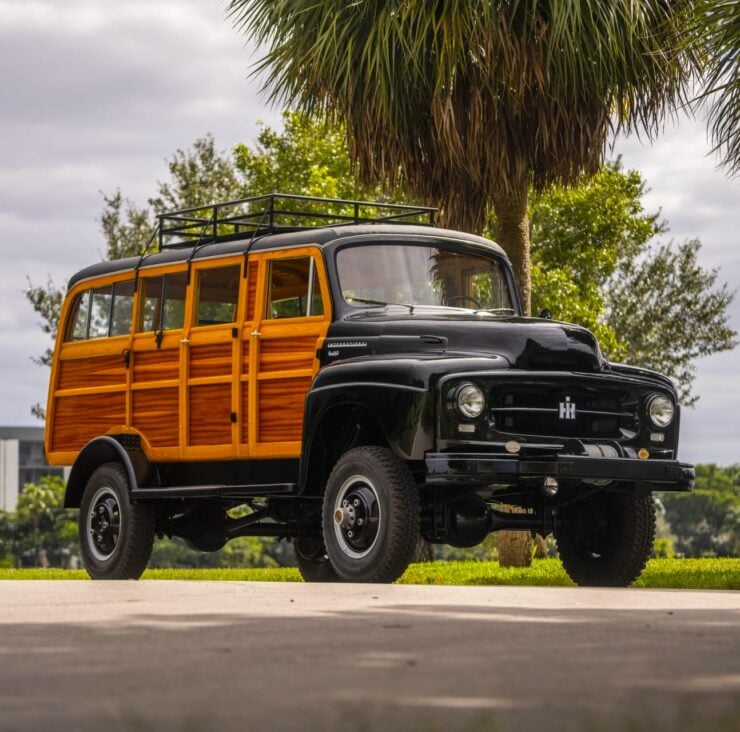

The 4×4 versions of the R-series trucks proved popular for many buyers who needed cargo ability and off-road capability. Engine options included both gasoline and diesel inline-sixes of varying displacements and power outputs, and power was sent back through a 4-speed manual transmission and a dual-range transfer case to either all four wheels or the rear wheels only.
The medium duty R-series was replaced with the International S-series in 1955 which was also offered with a 4×4 option, as well as 6×6 for those who needed it.
The Ex-Minuteman International R140 4×4 Shown Here
As mentioned in the introduction, the truck you see in this article is a 4×4 1954 International Harvester R140 that was ordered and specified by the Army Corps of Engineers for the Chief Engineers of the Minuteman Missile System based in South Dakota.
Just five of these would be built, all of which were essentially identical and built-to-order. Only three are known to remain today, and this is the only one of the three that has been restored back to as-new condition.
These trucks were built with a full bus-style body almost entirely made from wood, commonly called a “Woody” as a result. It has seating for six inside on two rows of black bench seating, and it has a large luggage/cargo section in the rear – likely used for engineering supplies in-period.
The truck has a body-on-chassis design, as you would expect, and an all-steel front end. This example is powered by a 108 bhp OHV SD-240 inline-six (240 cubic inches / 3.9 liters) – a larger engine that was likely optioned over the 220 cubic inch (3.6 liter) OHV inline-six typically used in the R140.
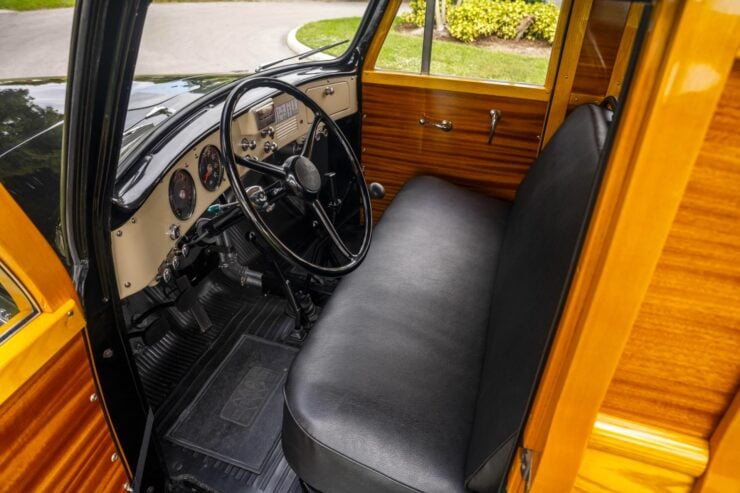

Up front you’ll find a Tulsa Winch for hauling you out of sticky situations, and the truck rides on steel wheels with front locking hubs and Eaton axles.
The truck is now due to roll across the auction block with Mecum in mid-January at their Kissimmee auction. If you’d like to read more about it or register to bid you can visit the listing here.
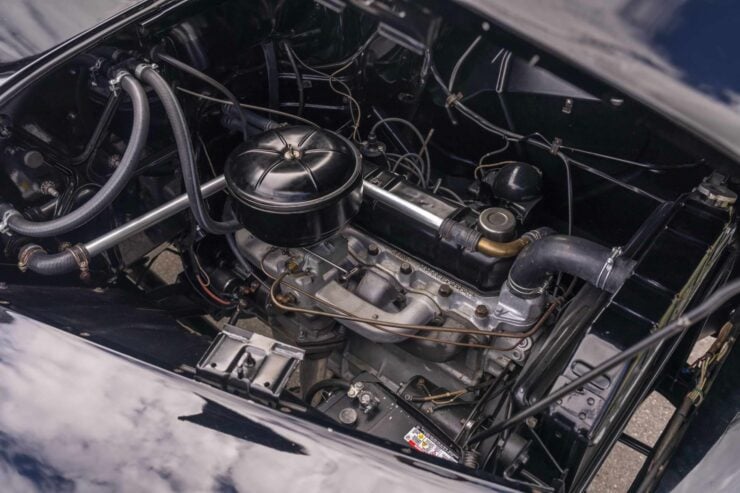
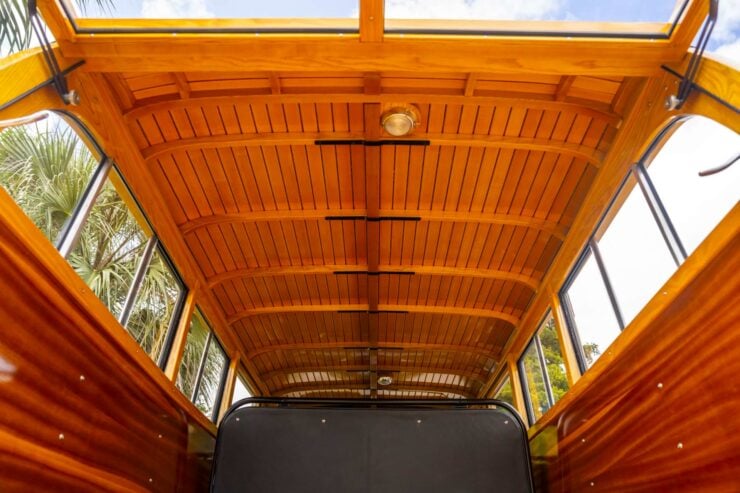
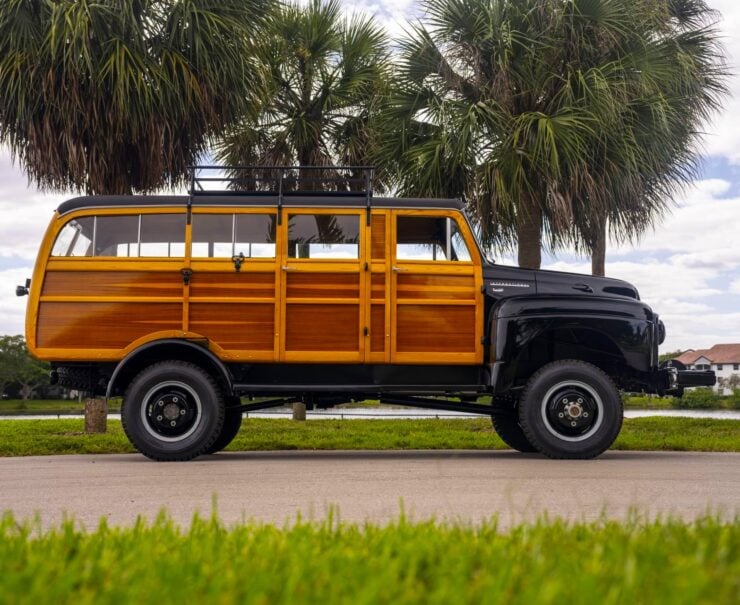
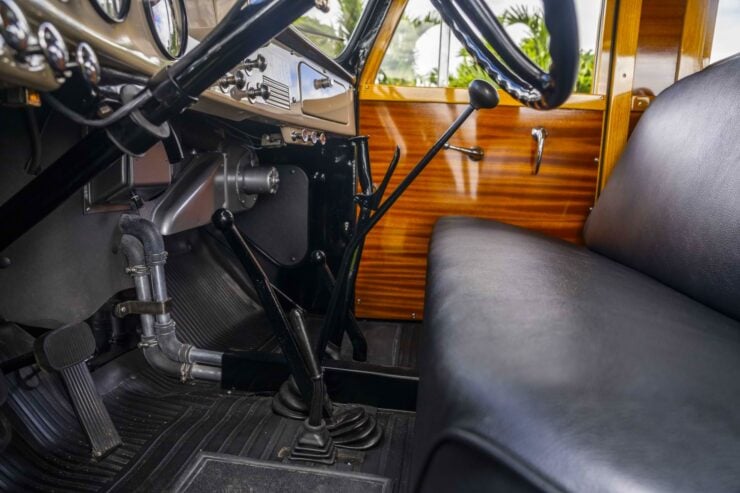
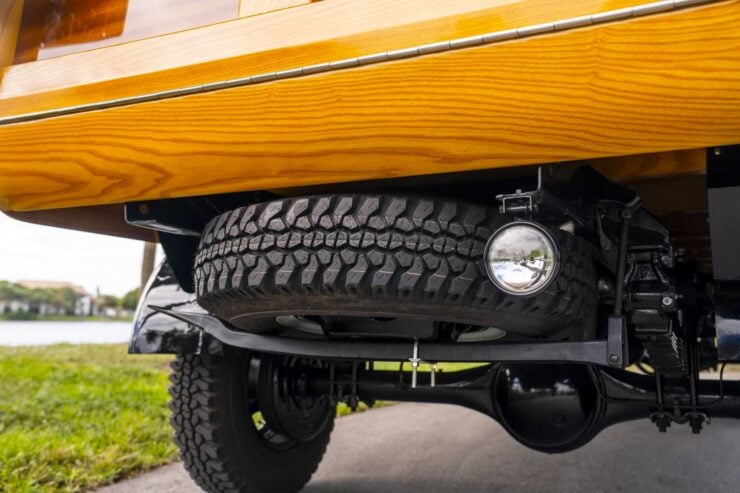
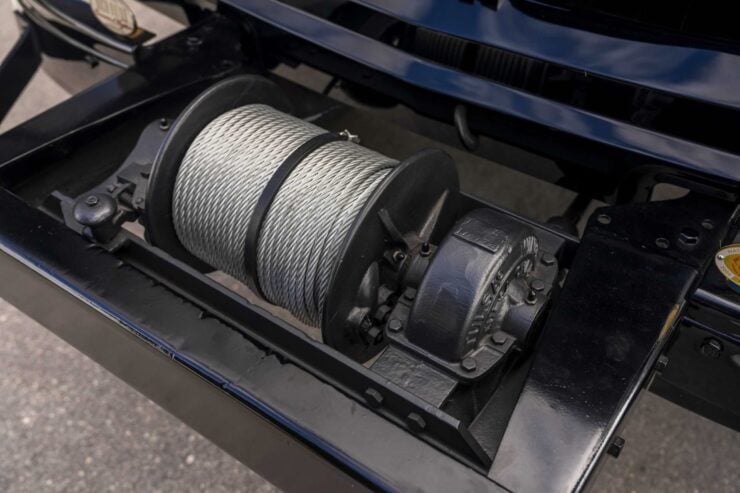
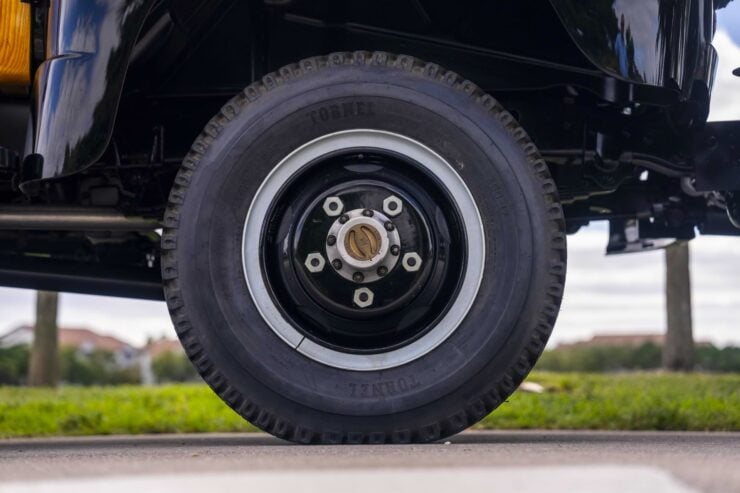
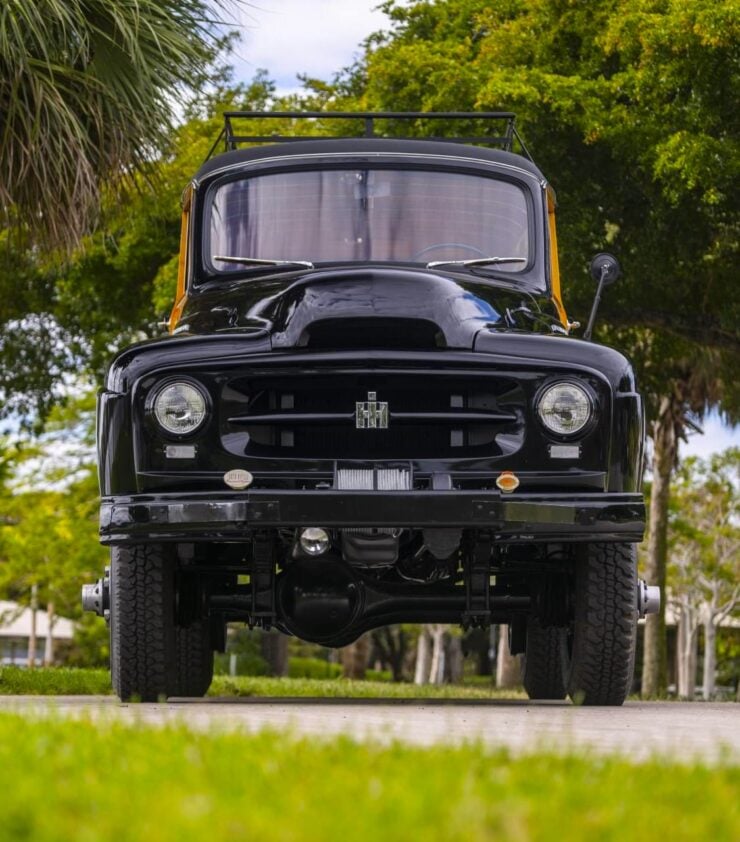
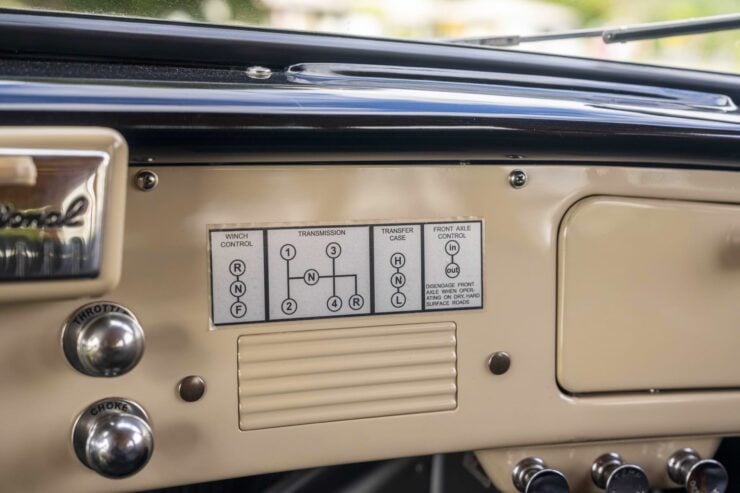
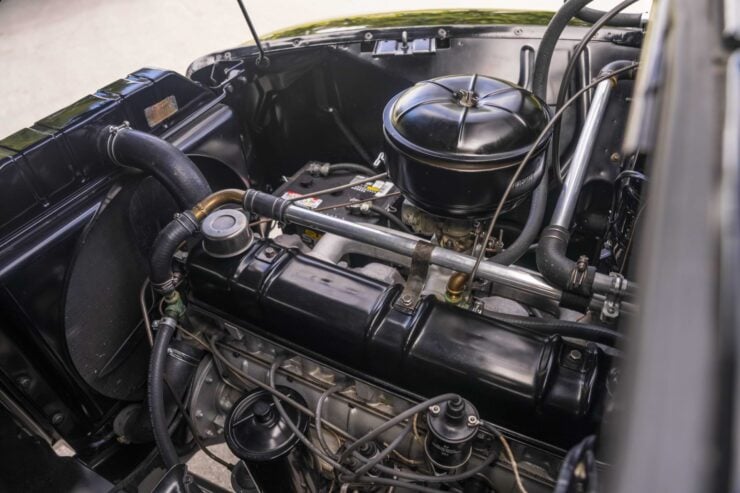
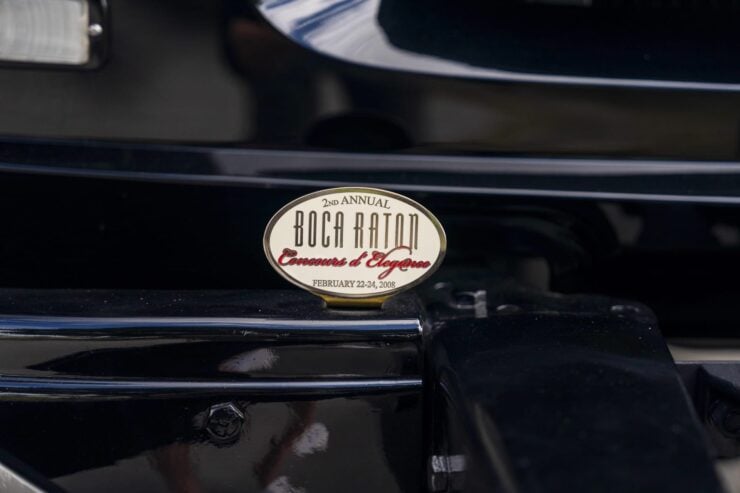
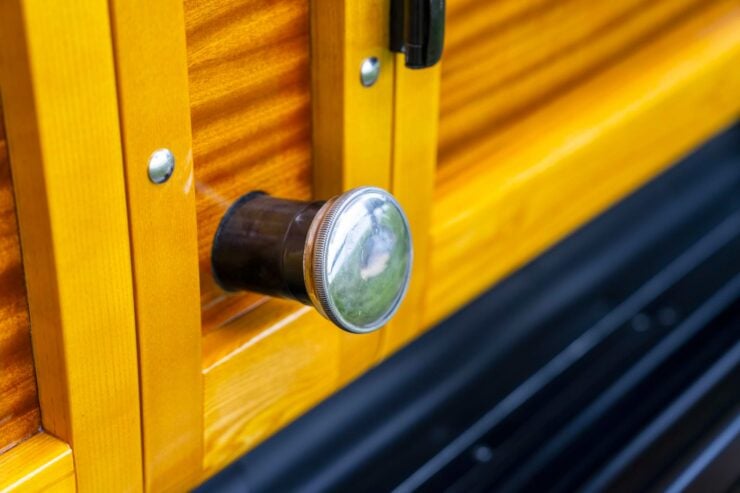
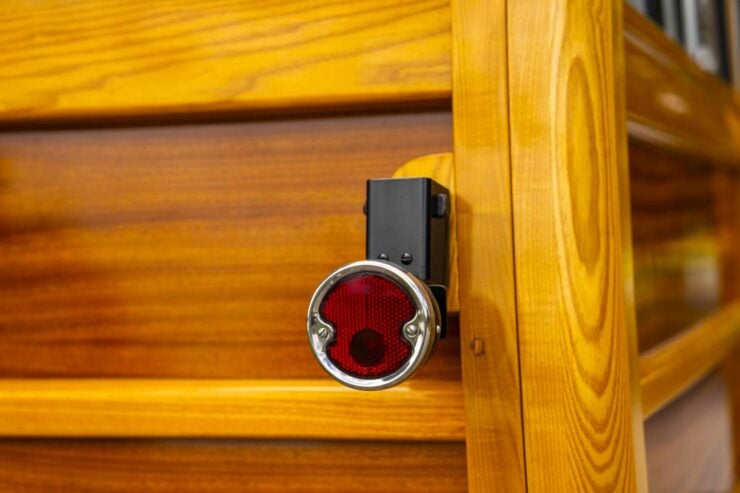
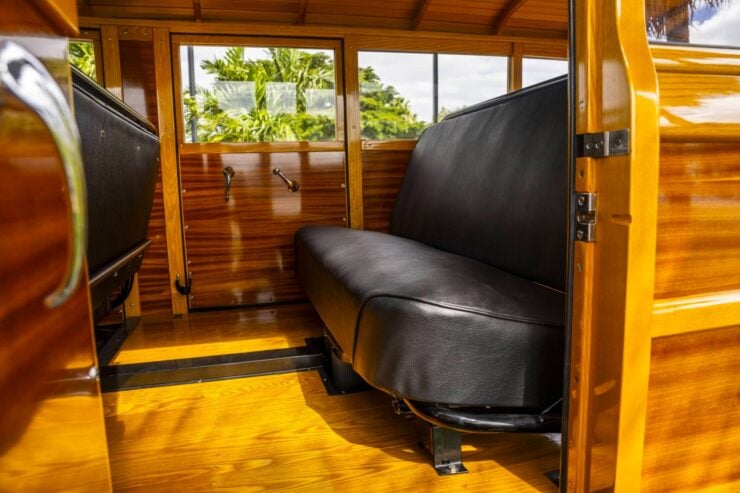
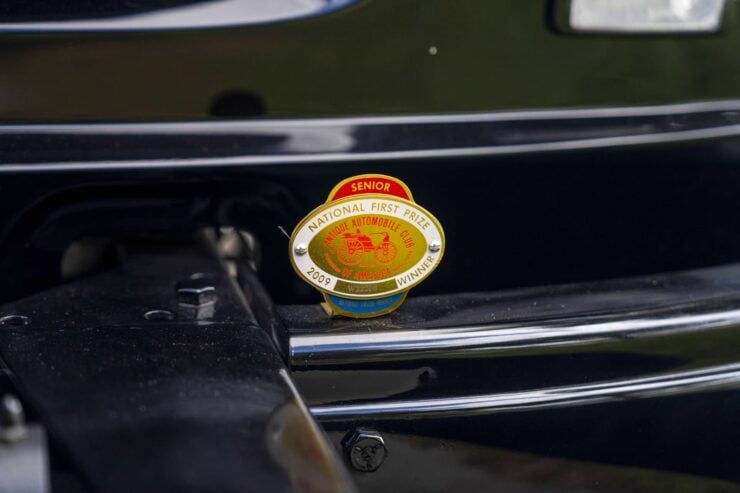
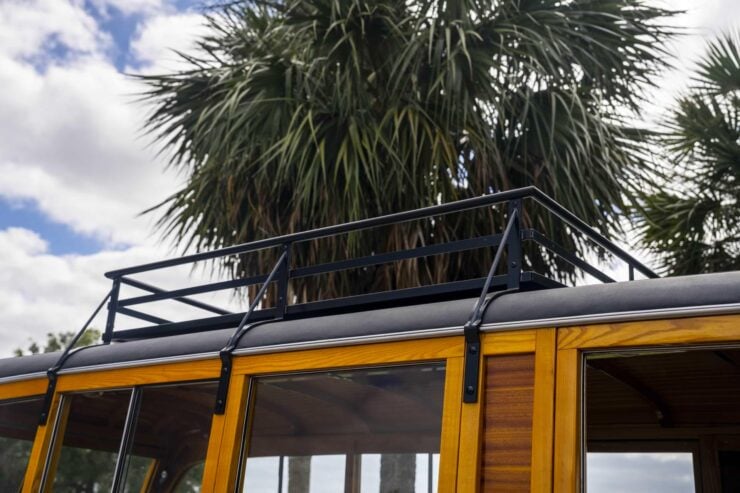
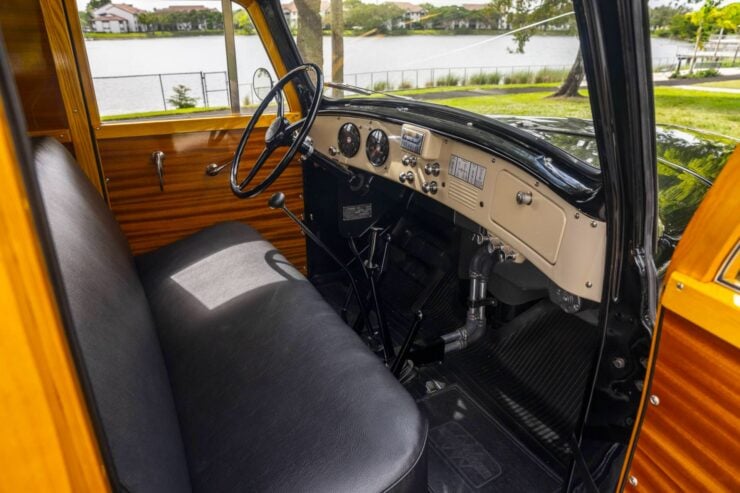
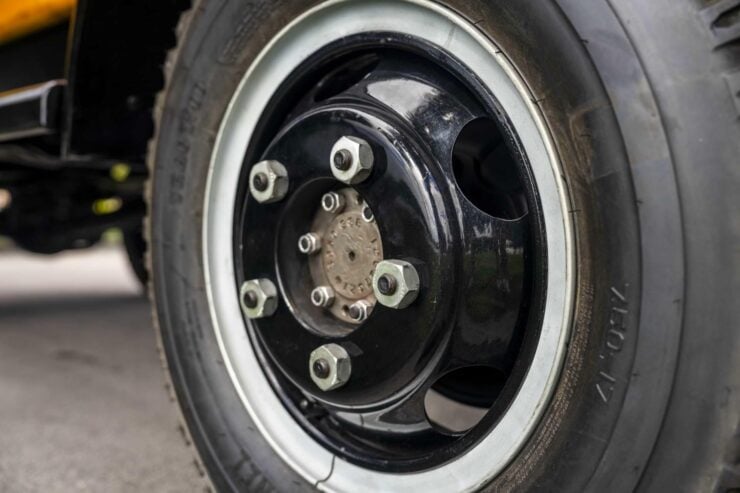
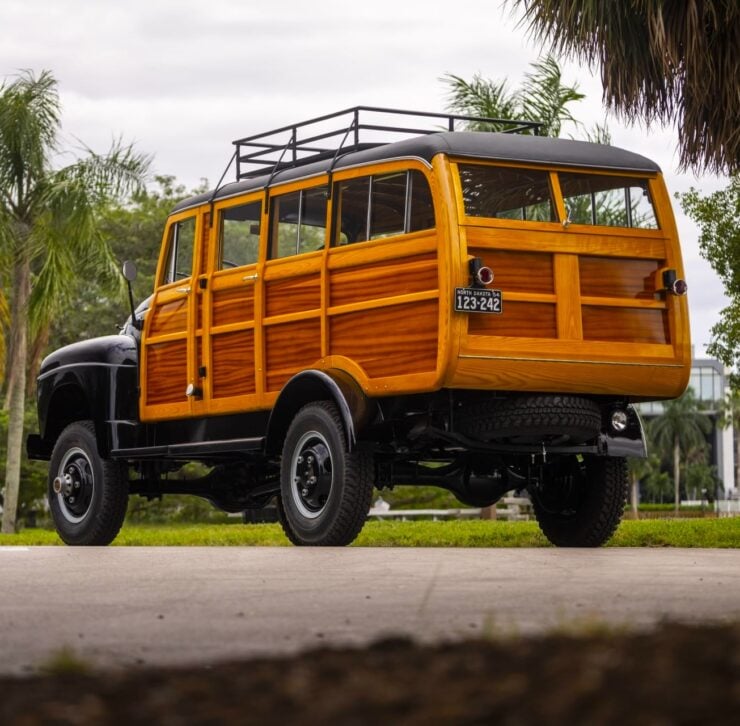
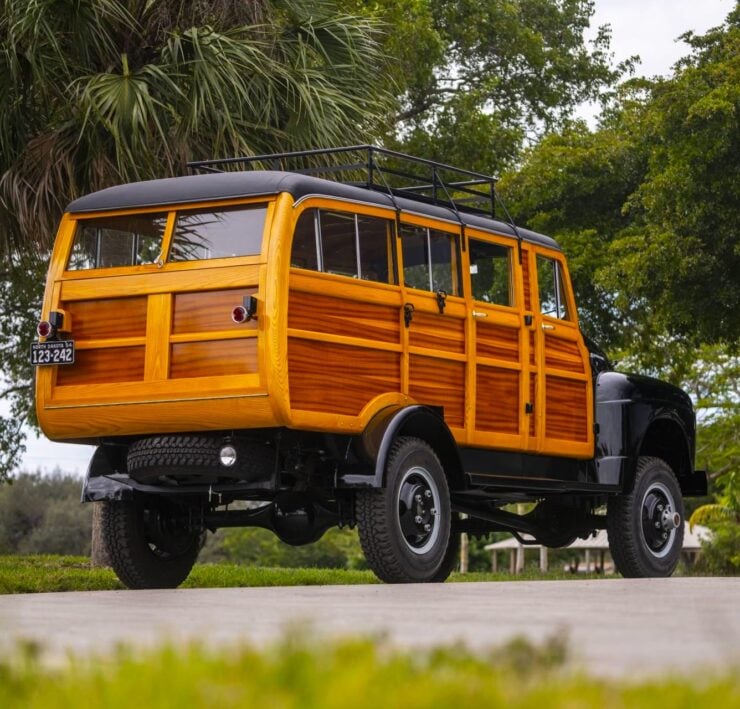
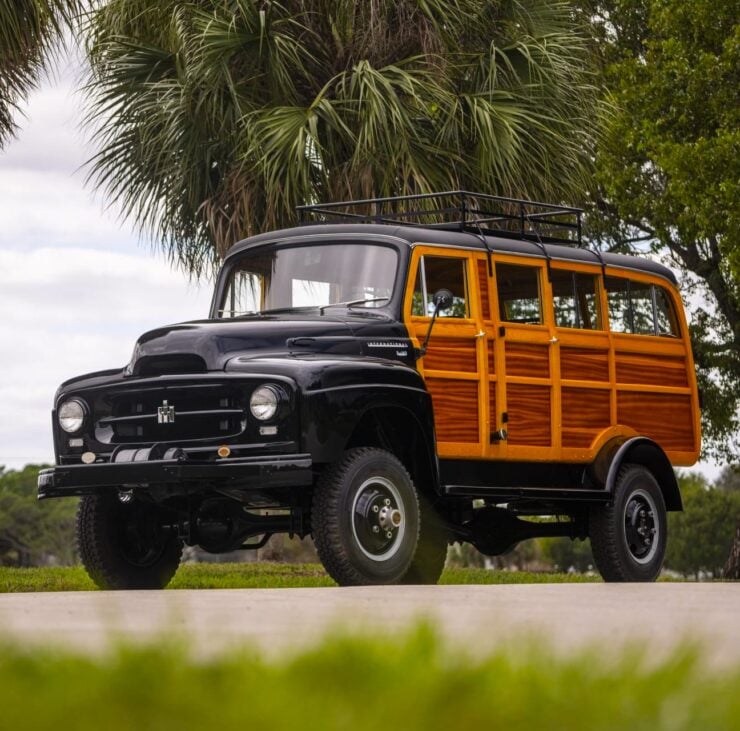
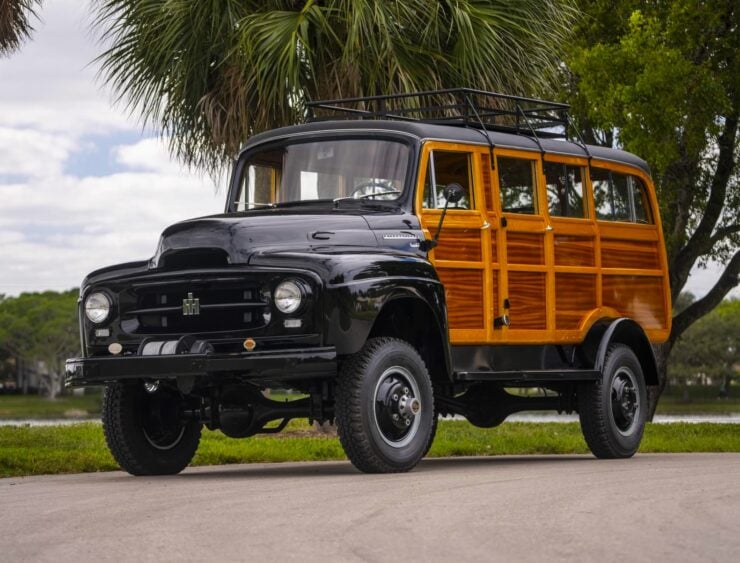
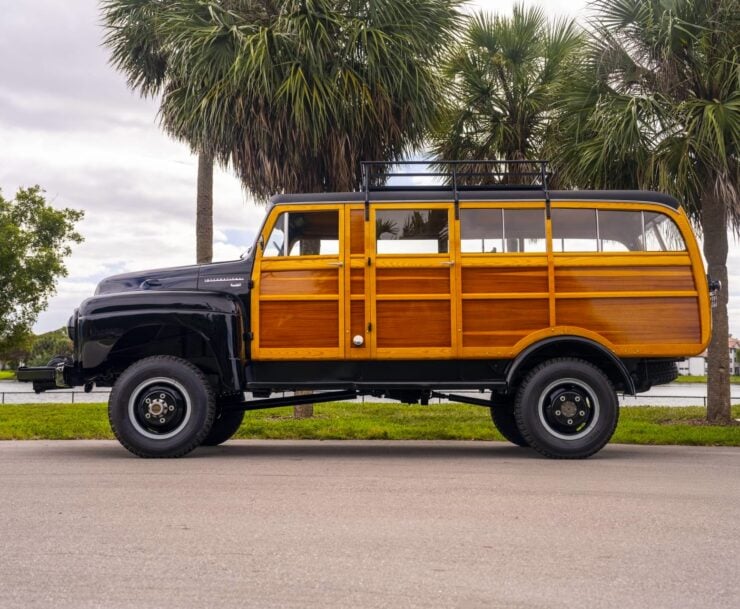
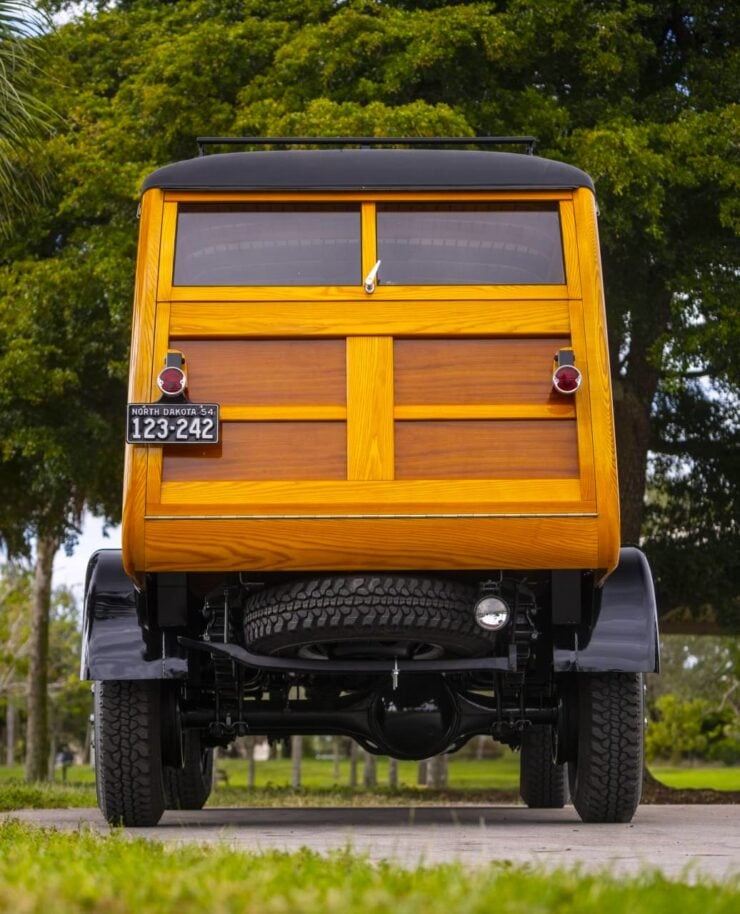
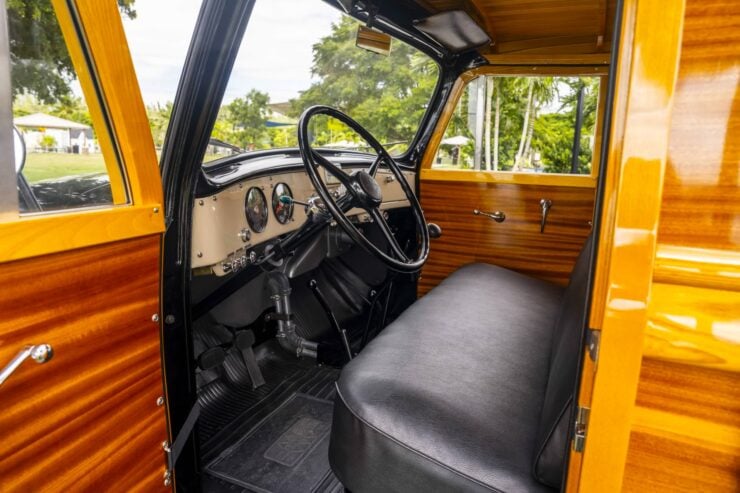
Images courtesy of Mecum

